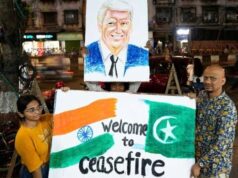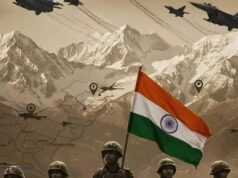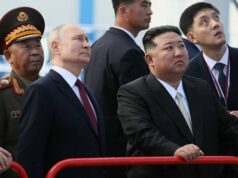Japan Space Defence Unit Launched
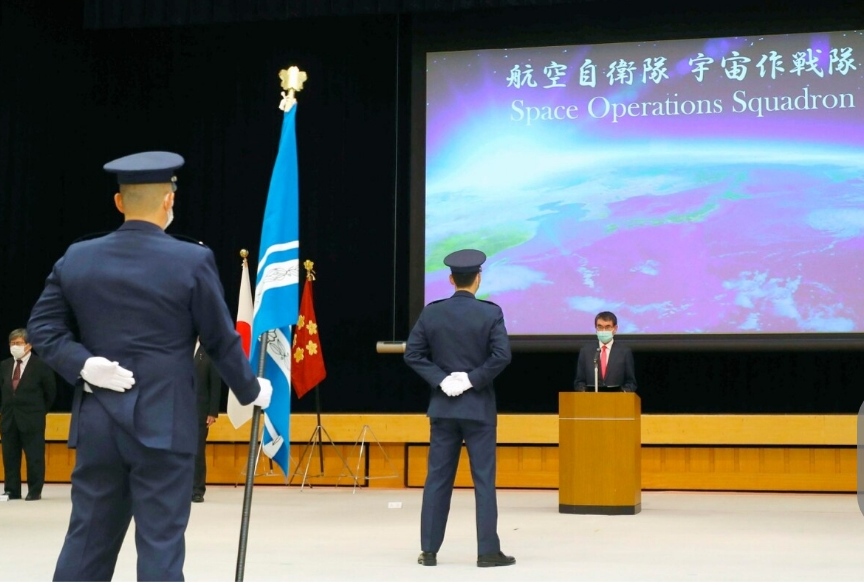 The US of America created its 6th Defence Force as US Space Defence Force on 20 December 2019. On Friday the 16 May 2020 the Commander In Chief unveiled the Space Force flag along with a ‘super-duper missile’ plan for this Force.
The US of America created its 6th Defence Force as US Space Defence Force on 20 December 2019. On Friday the 16 May 2020 the Commander In Chief unveiled the Space Force flag along with a ‘super-duper missile’ plan for this Force.
Gen. John “Jay” Raymond, present Commander U.S. Space Command is now the Chief of Space Operations and the latest member of the Joint Chiefs of Staff. For some time he may also retain command as the Commanding General of the Space Command. General Raymond along with his Chief Master Sgt. Roger Towberman held the Space Force flag as President Donald Trump unveiled it officially, during the its presentation in the Oval Office of the White House.
Simultaneously on 18 May Japan has also launched a space unit as part of its Air Self Defence Force. This unit is to monitor dangerous space debris and suspicious satellites, as Japan ramps up security in what experts describe as a new battleground.
The launch ceremony of Japanese Space Unit.
The formation of the 20-person unit, which falls under the Air Self-Defence Force, comes days after Japan’s security ally, the US, unveiled the flag of its own dedicated space warfare service branch.
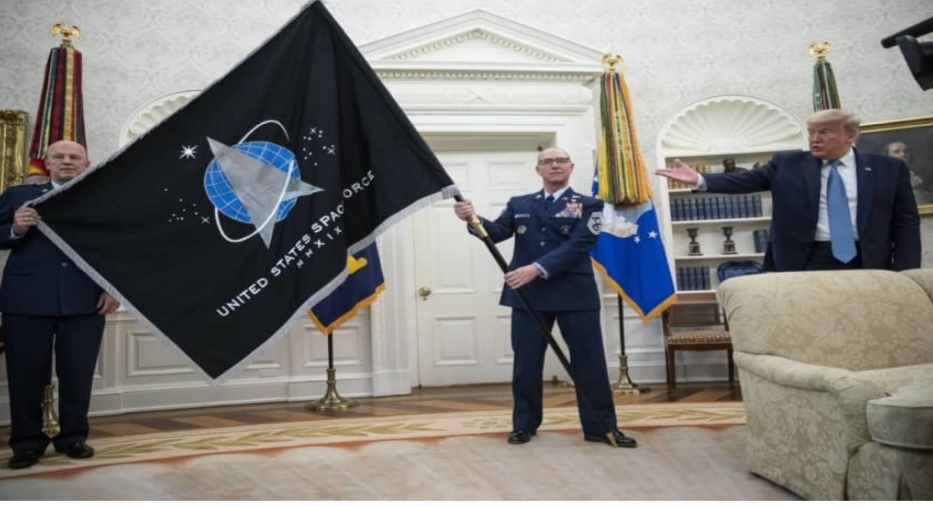
Japan launched its new Space unit to monitor and counter threats to the country’s satellites. The twin moves are aimed at allowing the two nations to work closer together against hybrid warfare, amid concerns of sophisticated Chinese and Russian technology that can disrupt, disable or even destroy satellites.
Defence Minister Taro Kono said at the launch ceremony on Monday that Japan had to urgently raise its situational awareness in the space domain, and the unit, called the Space Operations Squadron, will work with both the Japan Aerospace Exploration Agency and the new US Space Force.
The Space Operations Squadron, part of the Japan Air Self-Defense Force, starts with 20 members and is expected to grow to about 100 members once the unit is fully operational in 2023.
The role of the unit is mainly to monitor and protect Japanese satellites from enemy attacks or space debris. It will also conduct satellite-based navigation and communications for other troops in the field.
The unit will cooperate with U.S. Space Command that President Donald Trump established last year, as well as Japan’s space exploration agency, Japan Aerospace Exploration Agency, Defense Minister Taro Kono said.
“It is important that we gain superiority in the space domain as well,” Kono said Monday at a launch ceremony. “We must adapt to the new security environment as soon as possible.”
Prime Minister Shinzo Abe has pushed for Japan’s Self-Defense Force to expand its international role and capability by bolstering cooperation and weapons compatibility with the U.S., as it increasingly works alongside American troops and as it grows concerned about the increasing capabilities of China and North Korea.
Kobe University security expert Tosh Minohara said the Space Operations Squadron had been planned for 2022 but its launch was propelled forward, given imminent security challenges, with “outright Chinese aggressiveness” pushing the two allies closer.
The unit will have 100 people when fully operational in 2023.
As of March last year, the United States had 125 satellites, China had 103, Russia 96, and India 12. These exceed Japan’s 11 units, with Tokyo long relying on US satellites for the collection of ground image data and information on ballistic missile launches from North Korea.
But military satellites aside, damage to civilian satellites could also impede meteorological observations and air traffic control.
Japan’s Defence Ministry’s pacifist focus on space debris is evident in its pledges to secure the “stable use of space by providing advice to operators based on orbit analysis”.
Space debris can travel at speeds of seven to eight kilometres per second, posing a clear threat to the eyes in the skies that can be active up to 36,000km above Earth.
Japan also aims to launch its own space surveillance satellite by 2026.
Meanwhile, experts say the degree of provocation of actions, such as knocking satellites out of orbit, remains a grey area. Dr Masashi Nishihara, president of Japan’s Research Institute for Peace and Security, told The Straits Times it is easy to argue that the action was “accidental or not provocative” as there are no human casualties.
“This is all Star Wars stuff,” Dr Minohara quipped. “Japan (and the US) must develop procedures on space warfare conduct as battles will eventually be fought in space.”
India must take note of the above and operationalize its Defence Space Agency to a full fledged tri Services Space Defence Command at the earliest. The journey was commenced by Lt General H S Lidder in 2005 will be fulfilled only with the formation of this Space Defence Command.

